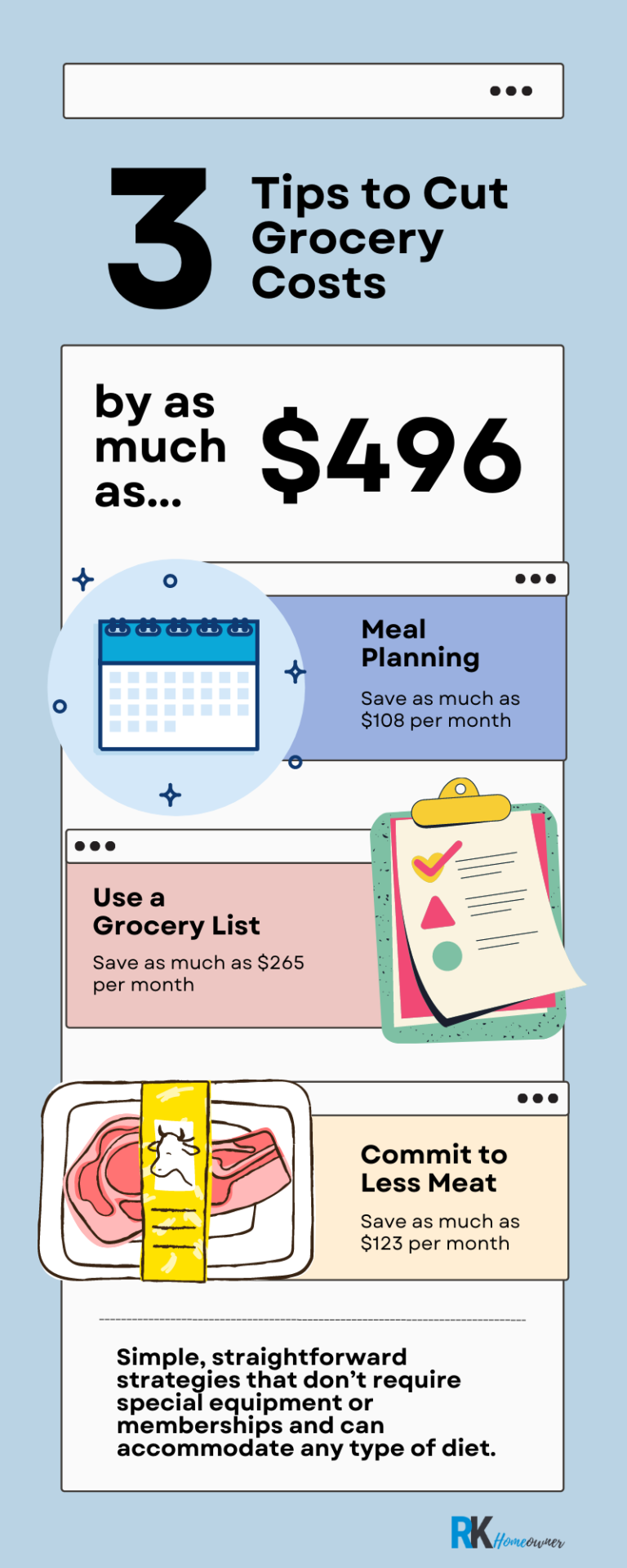Save Up to $496 Each Month on Food Costs with these 3 Tips
As a personal finance expert, I’ve spent years (and won awards) trying to help North Americans learn how to save, shop and spend better. While there are countless ways to trim the budget, I was recently inspired to focus on one theme: food.
Like many North American families, we are always stunned at the monthly cost of groceries. Despite strategically shopping bulk items and looking for sales, we are often hitting the four-digit price range on a monthly basis.
When you add in special occasions—such as Family Day, Easter weekend, Victoria Day, Thanksgiving, family birthdays and anniversaries—our food bill starts to skyrocket, quickly.
To help curb our coins without restricting our cravings, I dug into the suggested strategies for the best ways to save on grocery bill costs. Quite quickly I threw out some of the more standard suggestions, such as bulk shopping. Sure, a bulk grocery buy can certainly help you save (if done right) but for many families, the space and budget restrictions of their current situation inhibit this type of food planning and storing.
Instead, I found three simple strategies that anyone can adopt. These strategies are simple, straightforward, don’t require special equipment or memberships and can accommodate any type of diet. With that in mind, here are my top three ways to save as much as $496 per month!
#1: Make a Meal Plan—Save as Much as $108 Per Month
The average American family of four throws out $1,500 USD in food each year. Canadian families toss less, on average, with 140 kilograms going in the garbage—for an annual cost of $1,300 CDN per year.
To put this in perspective, the tossed food waste works out to almost a third of a family’s grocery costs, each year.
The key to reducing food waste is to not buy too much. The best way to accomplish this is through meal planning. If you know what you’re going to eat throughout the week, you can shop accordingly so the food doesn’t sit in the fridge and rot.
By adopting a meal plan and shopping for groceries based on this meal plan, Americans could save up to $125 USD per month; Canadians could save just over $108 CDN per month.
#2: Make a List—Save as Much as $265 Per Month
According to research from the University of Pennsylvania shopping without a list can increase your grocery bill by 23% due to unplanned purchases.
While it sounds simple, less than half of North Americans use a list when grocery shopping. This means more than half of North Americans spend almost a quarter more than they have to in order to feed themselves and their family.
Evidence shows that making and sticking to a grocery list helps us stay focused and buy only the things we need.
At a time when food costs are going up, making a list is an easy and smart way to trim our spending budget—and save more of your hard-earned cash.
For the average American, who spends just under $387 per month on groceries, using a grocery list could help drop the monthly food costs by as much as $90 USD per month!
The savings are even greater for Canadian families. According to a 2021 Canada’s Food Price Report, the average family spends just over $13,900 CDN per year on groceries. Use a grocery list and a family could save as much as $3,197 CDN per year—or just over $265 CDN per month.
#3: Go Meatless—Save as Much as $123 Per Month
According to the U.S. Department of Commerce, Americans spend approximately $960 USD per year on meat, while Canadians spend $1,480 CDN on meat each year.
Stop choosing meat and the average American could save as much as $80 USD per month, while the average Canadian could save as much as $123 CDN per month.
Of course, spring and summer are grilling seasons—and this is often associated with charbroiled meat and perfectly grilled burgers. Rather than miss out on your favourites, consider reducing your meat purchases and increasing your non-meat grilling options. This will still help you save some money—let’s say $20 to $40 per month, once you factor in the cost of non-meat alternatives—and you may even find a new favourite! (My sister-in-law swears by grilled pineapple and watermelon!)

Final Thoughts
What’s great about the above suggestions is that you can adopt, adapt and update these cost-cutting strategies at any time. That gives you and your family the flexibility to splash out or cut back, based on your needs and limits. It also gives you specific plans to focus on, rather than trying to strictly adhere to one method or philosophy. I like these types of cost-cutting measures since they end up being the most versatile and useful—and that means more can save money while eating well.
Now, you’ll have to excuse me the grill needs attending!







